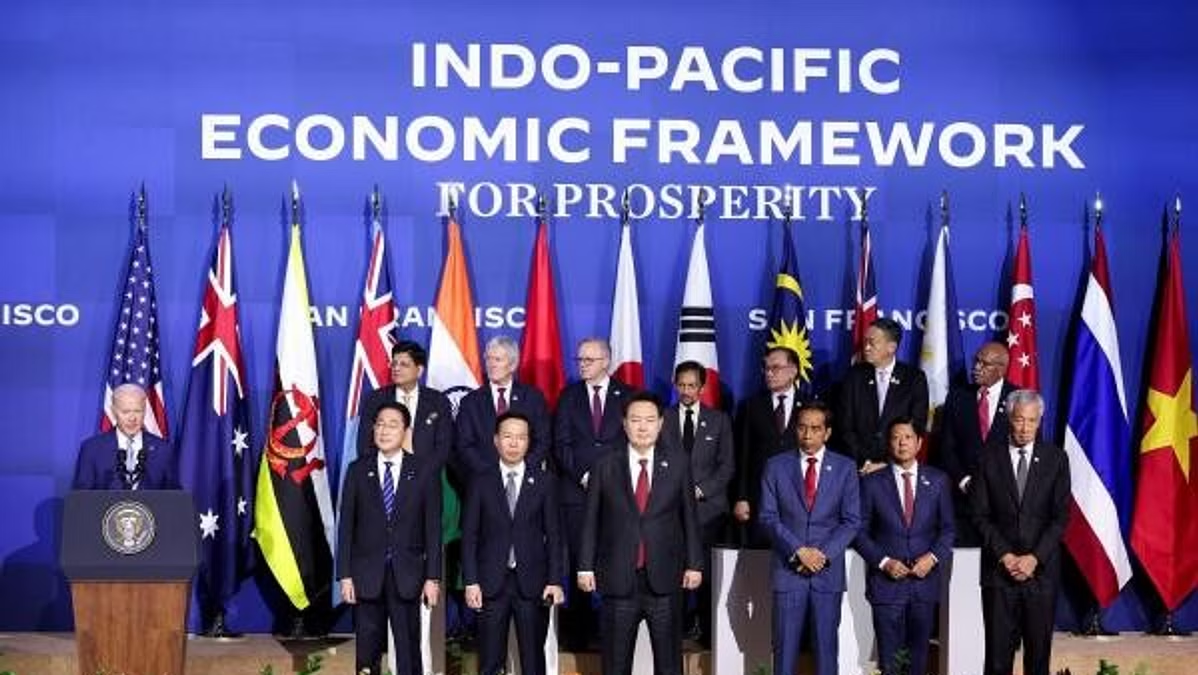The Indo-Pacific: A Crucible of Geopolitical Rivalry
The vast, shimmering expanse of the Indo-Pacific, a region stretching from the sun-kissed shores of the Indian Ocean to the dynamic, tech-infused western Pacific, has undeniably become the epicenter of 21st-century geopolitics. This isn't merely a geographical designation; it's a living, breathing theater where global fates intertwine, where the ambitions of nations clash, and where the future of international relations is being actively shaped. Teeming with vital sea lanes 🚢, a treasure trove of natural resources 💎, and burgeoning economies 📈, this region is a dynamic, ever-evolving landscape of power, interests, and aspirations.
A Tapestry of Interconnected Destinies 🤝: More Than Just Lines on a Map
The Indo-Pacific is far more than a collection of nations marked by lines on a map. It’s a vibrant tapestry woven from the threads of diverse cultures, histories, and economic systems. From the towering skyscrapers of Tokyo 🏙️ and the bustling markets of Shanghai 🌆 to the tranquil beaches of the Pacific island nations 🏝️, this region encompasses a kaleidoscope of human experience. This intricate web of interconnectedness, driven by trade, technology, and cultural exchange, makes it a crucial stage for global affairs, where every action reverberates across borders.
The Rise of China: Reshaping the Regional Order 🐉, A Force to Be Reckoned With
China's meteoric ascent as an economic and military powerhouse has undeniably reshaped the regional order, creating a new reality that nations must navigate. Beijing's ambitious Belt and Road Initiative, a colossal infrastructure development project spanning continents, has extended China's economic influence deep into the heart of the Indo-Pacific. However, China's increasingly assertive maritime claims in the South China Sea 🌊, coupled with its rapid military modernization 🚀, including the development of advanced naval capabilities, have triggered alarm bells among many regional and extra-regional powers, leading to a complex web of strategic calculations.
The Quad: A Counterbalance to China's Influence? 🛡️, Forging Strategic Alliances
In response to China's growing influence, the Quadrilateral Security Dialogue (Quad), comprising the United States 🇺🇸, India 🇮🇳, Japan 🇯🇵, and Australia 🇦🇺, has emerged as a critical pillar of regional security cooperation. These four democracies, united by shared values and strategic interests, have been deepening their defense and economic ties, conducting increasingly complex joint military exercises 🤝, and collaborating on critical technologies like 5G and artificial intelligence 🤖. While the Quad aims to promote a "free and open Indo-Pacific," it has also been criticized by some as potentially exacerbating tensions with China, raising questions about the delicate balance between deterrence and diplomacy.
India's Evolving Role: A Rising Power in the East? 🇮🇳, A Nation in Transition
India, with its vast population, burgeoning economy, and growing military capabilities, is increasingly asserting its pivotal role in the Indo-Pacific. India's "Act East" policy, coupled with its strategic partnerships with key regional players, has significantly enhanced its influence in the region. However, India faces a complex set of internal challenges and external pressures, including long-standing border disputes with China and Pakistan, which could potentially impact its ability to fully leverage its potential as a regional power and play a decisive role in shaping the region's future.
The South China Sea: A Flashpoint of Tension 💥, Where Maritime Disputes Ignite
The South China Sea, a vital artery for global trade, has become a major flashpoint of tension, a maritime arena where competing territorial claims ignite disputes and fuel regional anxieties. China's expansive claims over the majority of the sea, which overlap with the claims of several Southeast Asian nations, have led to a series of maritime confrontations 🚢, naval standoffs ⚓, and an alarming increase in the militarization of disputed features 🚧. The unresolved territorial disputes in the South China Sea pose a significant threat to regional stability and could potentially escalate into a major conflict, impacting global trade and security.
The Indo-Pacific: A Crucible of Innovation and Cooperation 💡, Beyond Geopolitics
Despite the prevailing geopolitical rivalries, the Indo-Pacific also offers immense potential for cooperation, serving as a crucible of innovation and technological advancement 🚀. The region is home to a thriving ecosystem of research and development, with cutting-edge advancements taking place in fields such as artificial intelligence 🤖, renewable energy ⚡, and biotechnology 🧬. Collaboration on these fronts can yield significant benefits for the entire region and the world, fostering economic growth, addressing climate change, and promoting scientific progress.
The Future of the Indo-Pacific: Navigating a Path Towards Stability and Prosperity 🕊️, A Collective Responsibility
The future of the Indo-Pacific will be determined by the choices made by the major powers and the smaller states within the region. Maintaining peace and stability will require a delicate balancing act, a nuanced approach that combines competition with cooperation. Open dialogue 🗣️, diplomatic engagement 🤝, and a steadfast commitment to upholding international law ⚖️ will be essential for navigating the complexities of this dynamic region and building a future of shared prosperity. This is not just a regional challenge, but a global responsibility.
What are your thoughts on the future of the Indo-Pacific? How can the major powers navigate the challenges and opportunities presented by this crucial region? What role do you see your nation playing? Share your insights and opinions below! 👇





